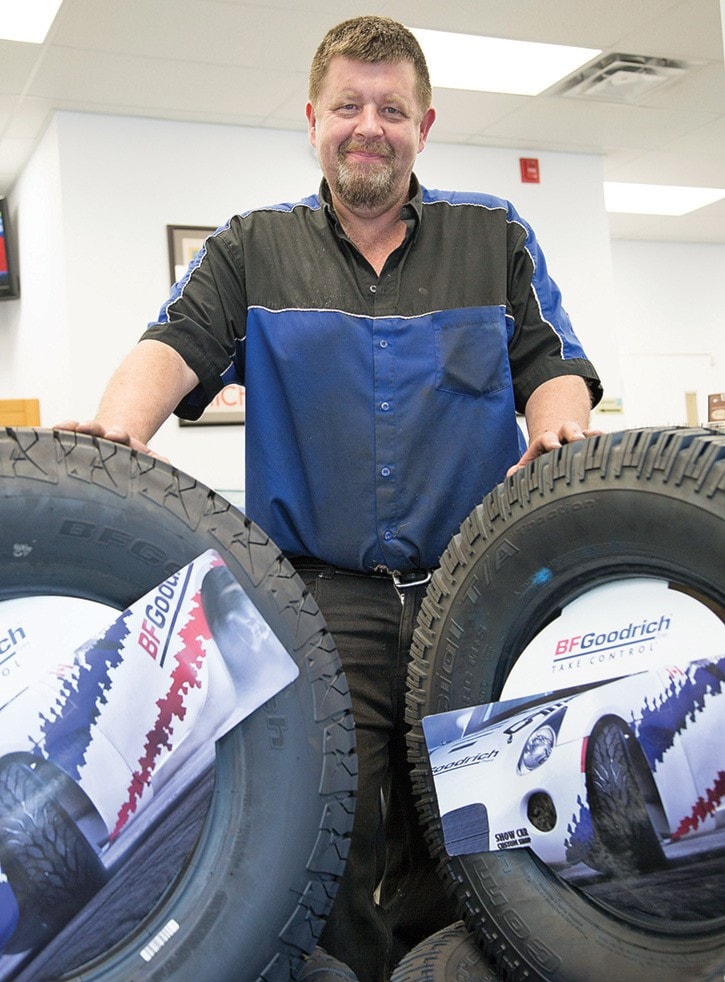While you may have started to winterize your home - or are still pushing the thought of ugly winter weather to the dark depths of your mind - don’t forget about what’s sitting in your driveway.
New provincial regulations came into effect last year that require you to at least take a look at what’s carrying you over the province’s highways.
On most B.C. highways, including the Trans-Canada on Vancouver Island, drivers are required to have appropriate winter tires between Oct. 1 and March 31. The regulations have been amended to allow motorists to use all-season tires, as long as they have a minimum tread depth of 3.5 milimetres.
“They want more tread depth for nasty conditions,” said Jeff Seabrook, owner of Westcoast Tires and Wheels Ltd., 4730 Sooke Rd., in Metchosin.
While he said 3.5 mm of tread is over the legal minimum tread requirement, it all comes down to the distance it takes to stop, which can exponentially increase as tread depth gets lower and lower.
He said there’s still a lot of confusion amongst drivers surrounding winter tire regulations. He attributes some of this to new signage, which unlike older signs, is missing the key word “or” between the symbols denoting which tires are permitted.
“That’s the law, now it comes down to what you need.”
Seabrook suggested winter tires for anyone who needs to be somewhere regardless of road conditions. For those who can spend an extra night at a friend’s house or take a day off work if the weather is ugly, he said, most all-season tires will suffice.“Probably 98 per cent of vehicles out there come stock with an all-season tire,” he said, adding the exception to this would be sports cars.
But for those who have animals at home or have to receive regular medical treatments, there’s no substitute for a good winter tire when the weather gets ugly. “At the end of the day, emergency vehicles … run winter tires in the winter,” he said.
He compared the tread on winter tires to ice cream -- when it’s in the freezer it’s hard, but when it’s in the fridge it gets soft and melts. Summer tires, he said, are more like butter; they’re hard in the fridge and soft at room temperature.
How these temperature changes affect the tread is why you should change your tires for the seasons. He said some all-season tires can start to lose traction at 7 C. The idea of changing tires according to season has been growing in popularity over the past eight or nine years, Seabrook said. “People have become more aware of their tires.”
He also warns that drivers need to be educated about the limits of their tires, especially when it comes to all-season tires.
“If it’s cold and nasty, slow down and leave yourself more room.” Road conditions also play a huge role in braking distances, so even if your tread allows you more traction and better acceleration, your stopping distance could be almost double in snow. “It comes down to speed,” he said.
West Shore RCMP are also often reminding drivers that speed limits are designed for optimal conditions, urging drivers to slow down in the rain and snow. So even if you have the proper tires on you can still find yourself be handed a ticket for speeding.
However, the fine for travelling without proper tires is $109, and detachment spokesperson Const. Alex Berube said that any vehicles involved in a motor vehicle incident usually undergo an inspection of tires at the scene.
katie@goldstreamgazette.com
